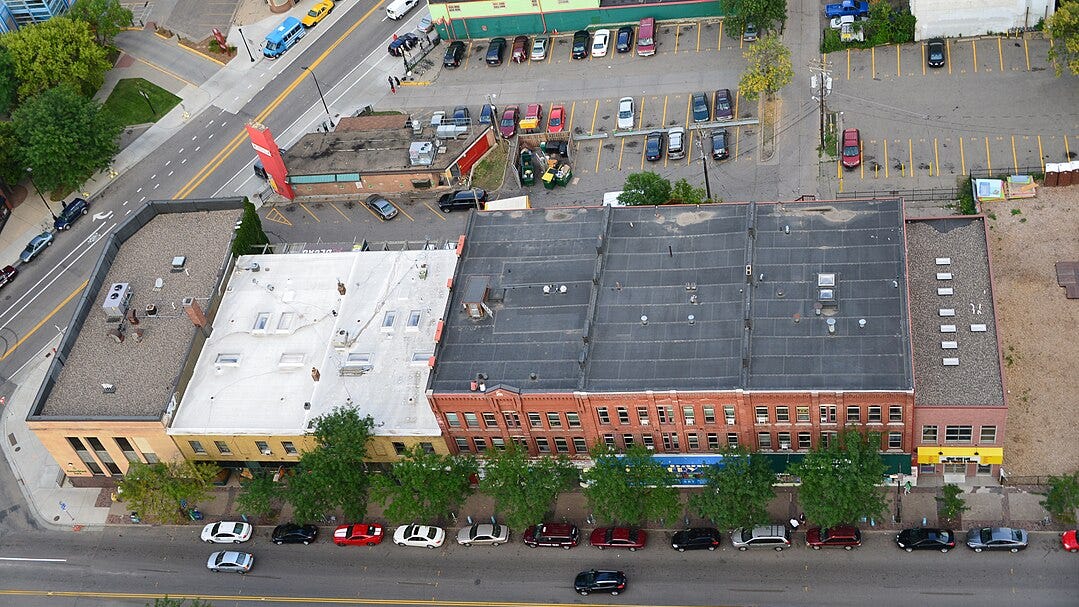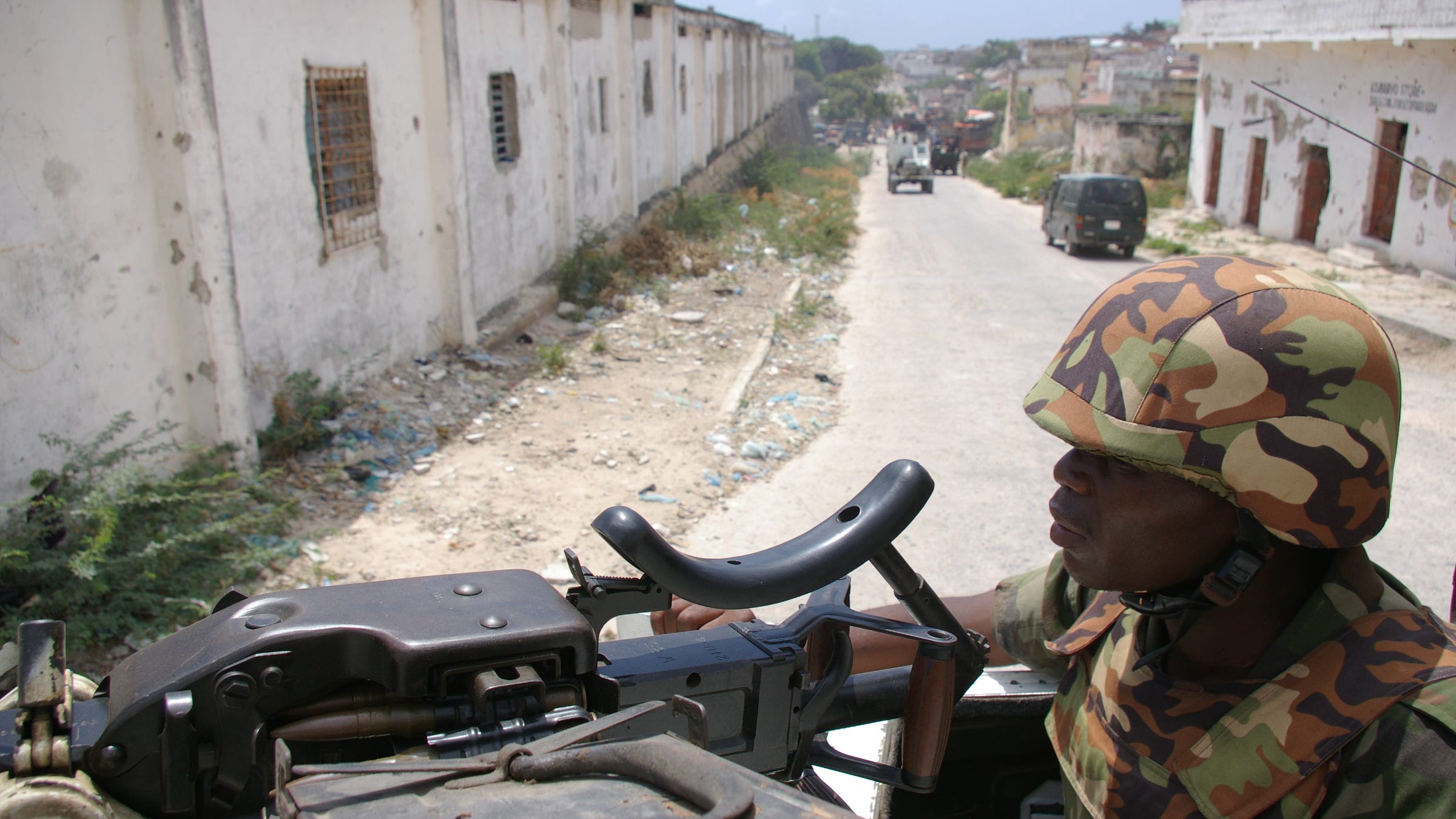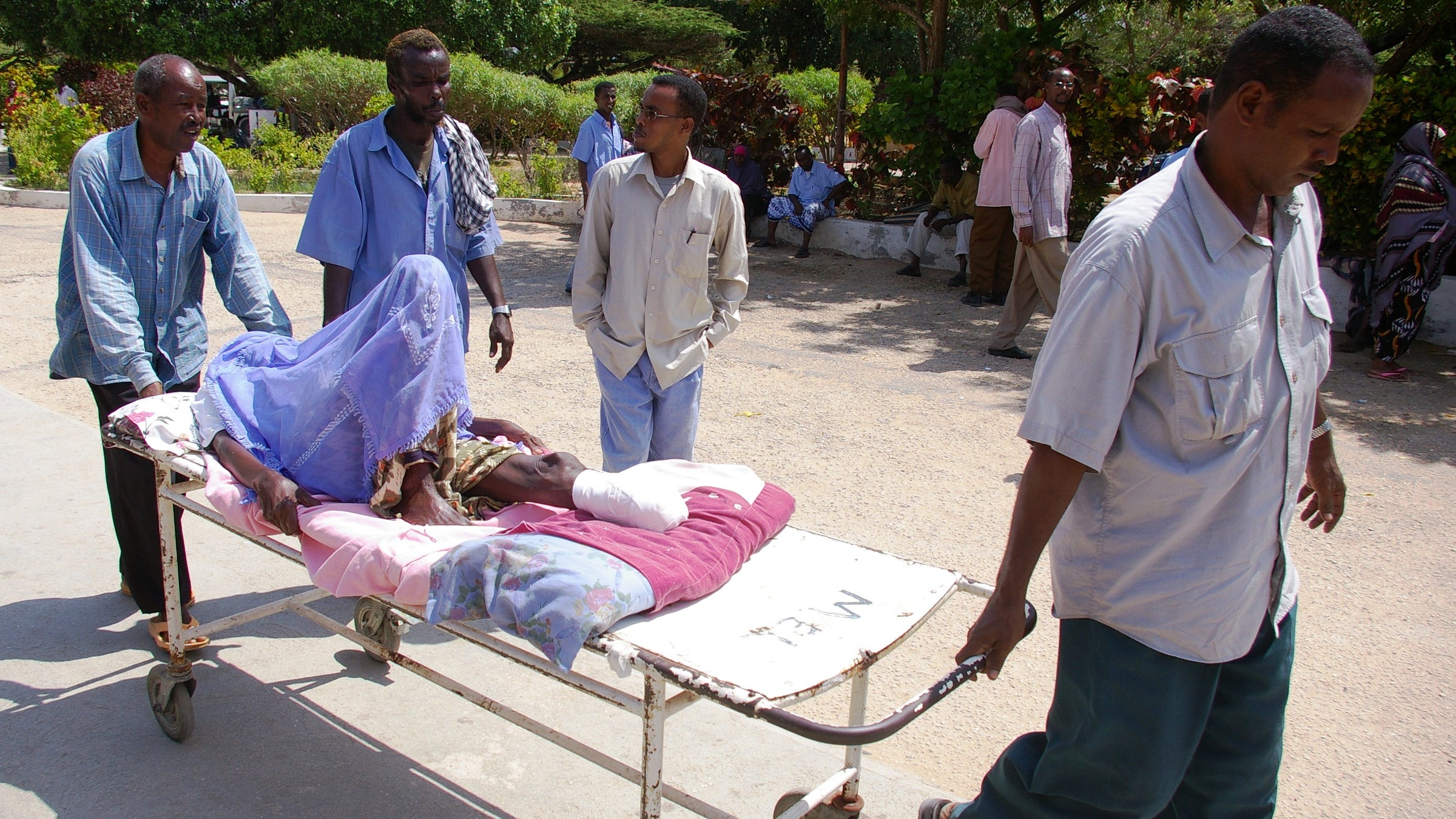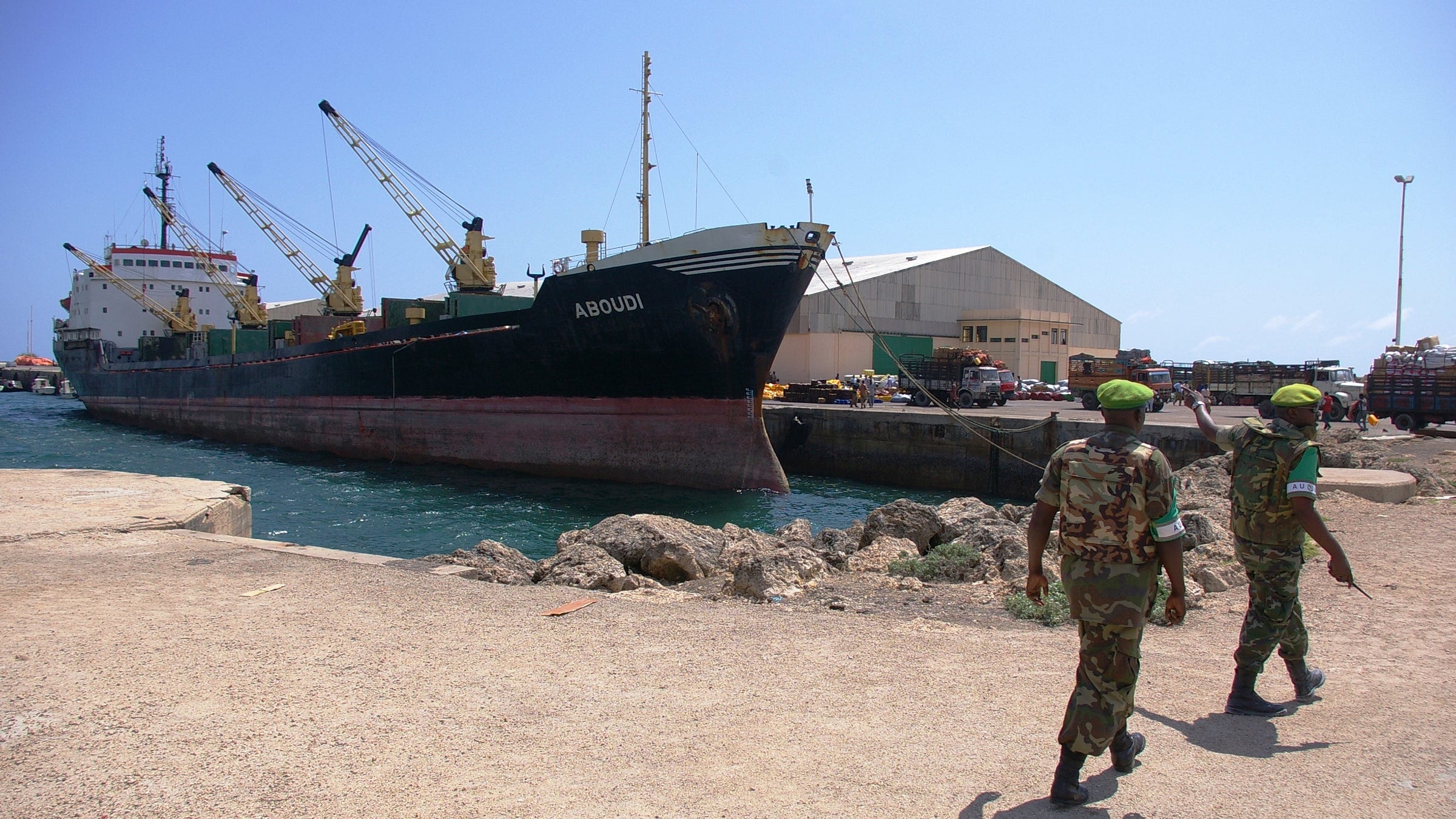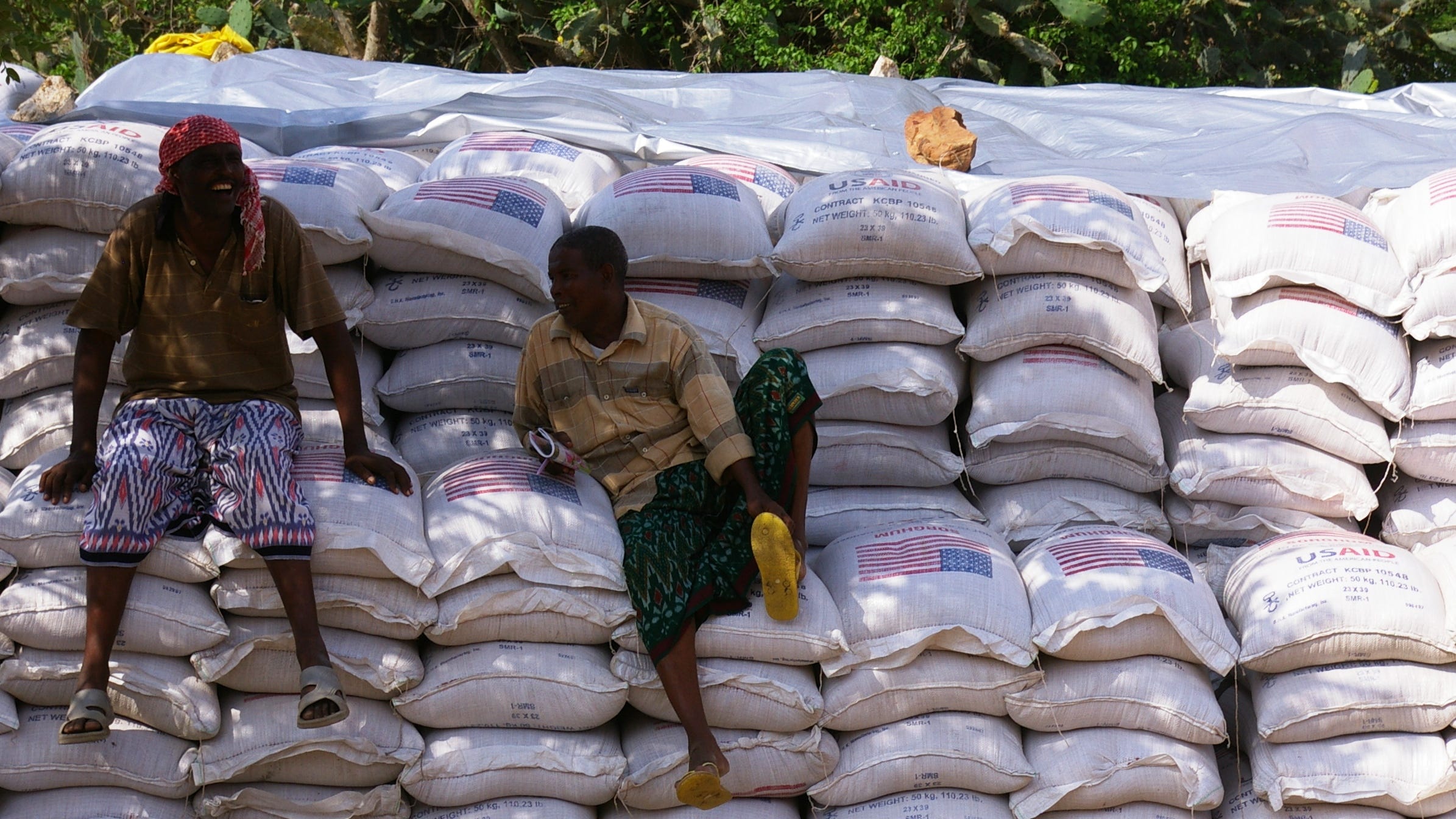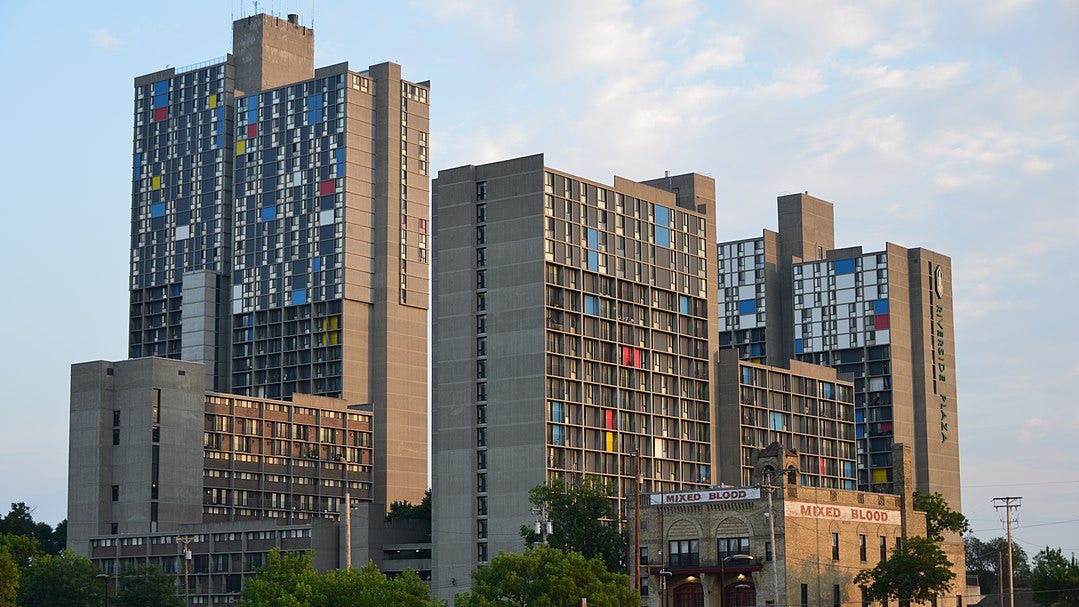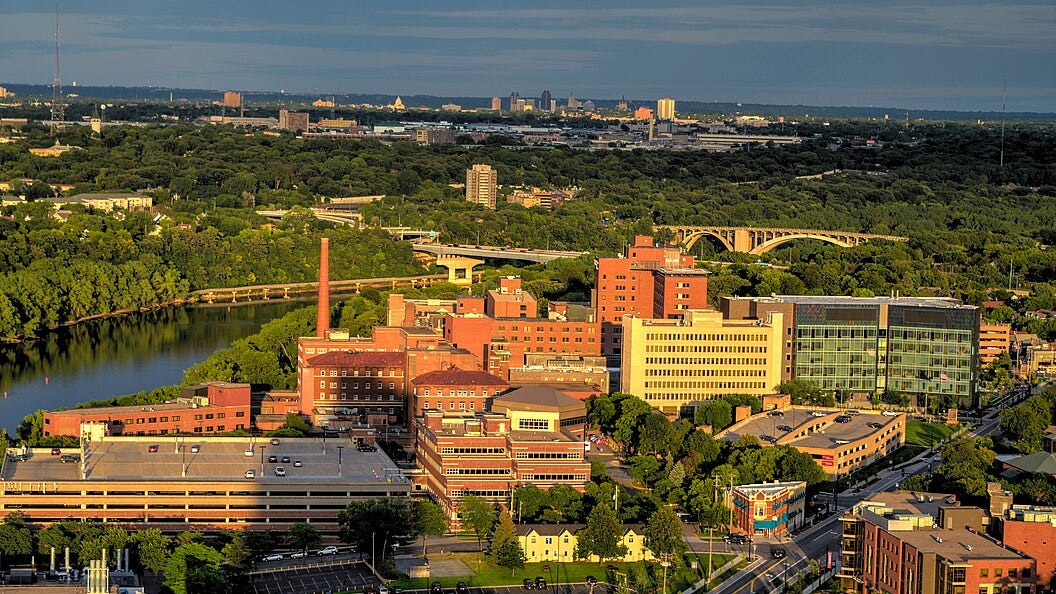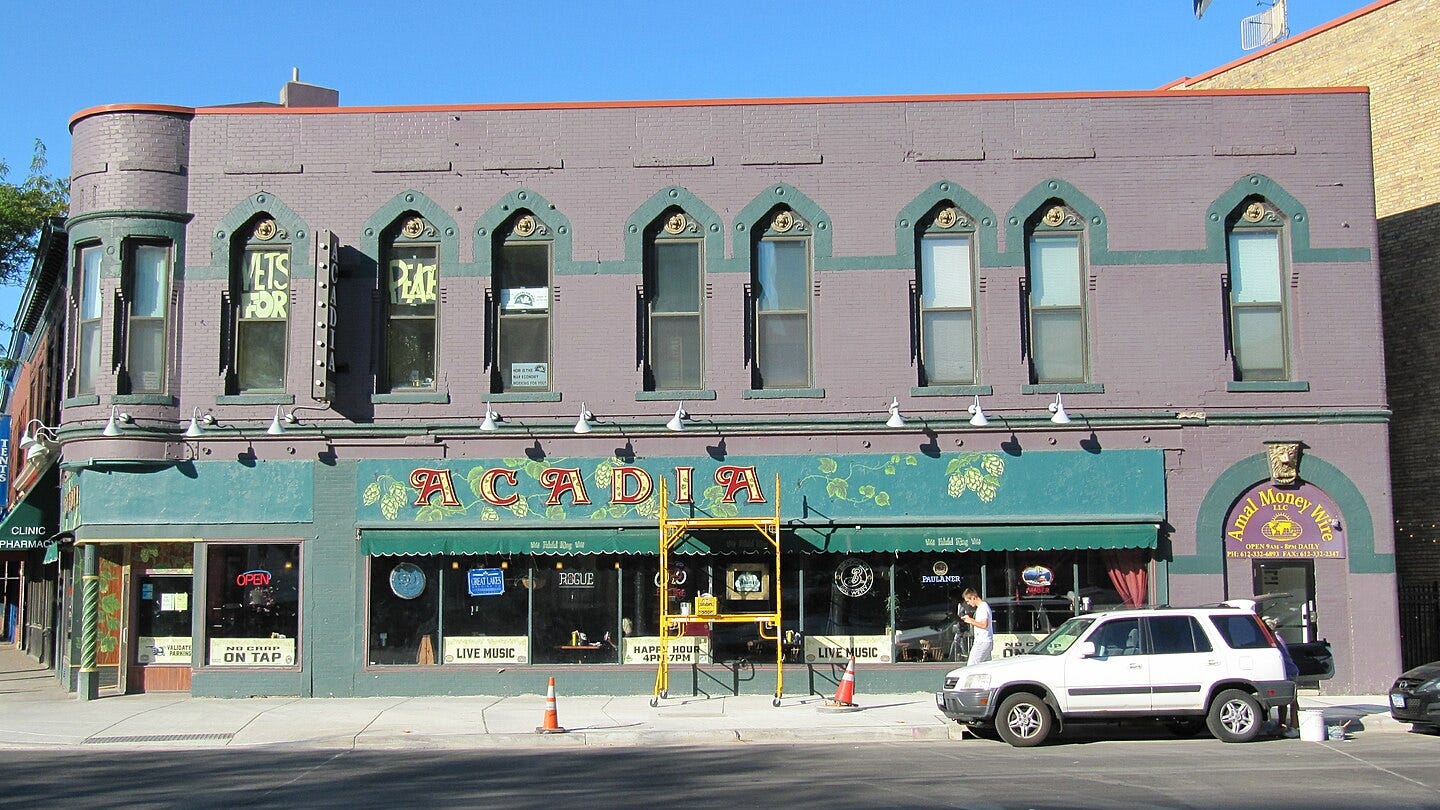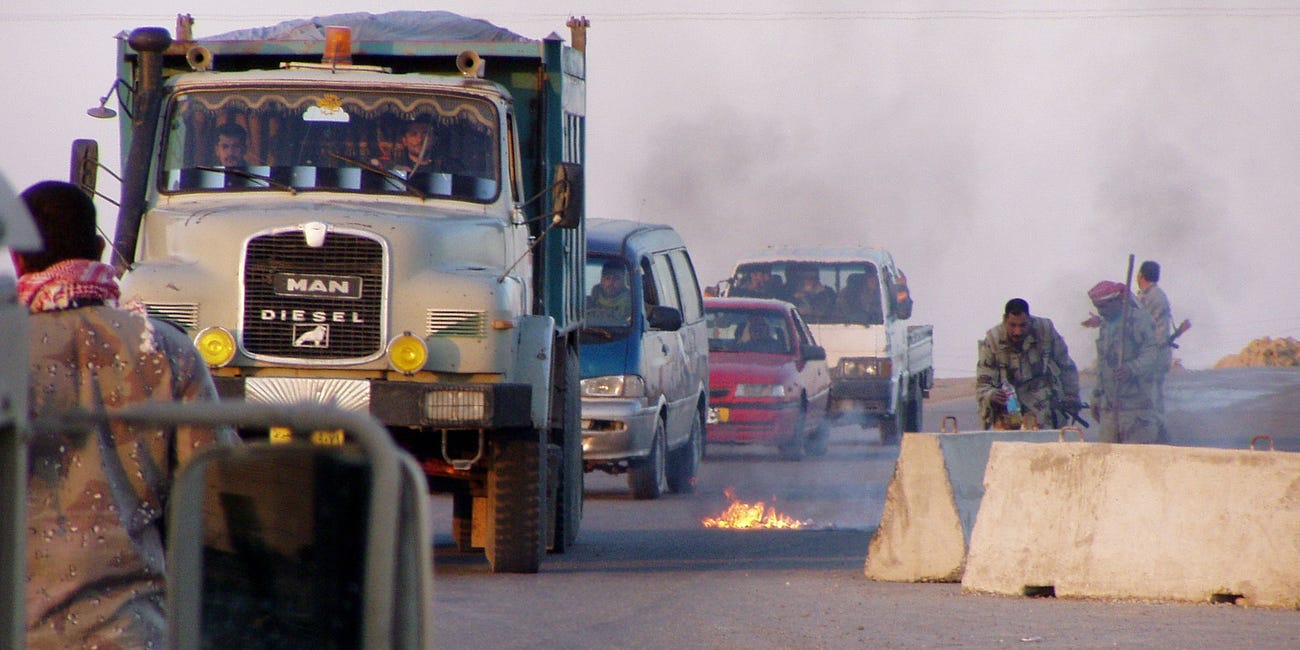The Holiest Gang
How young Somali immigrants searched for belonging, and found jihad, in Minnesota in 2009
With reporting by John Masato Ulmer
On Oct. 29, 2008, Shirwa Ahmed drove a car full of explosives up to a government compound in Puntland, a region of northern Somalia, and blew himself up.
The blast—apparently orchestrated by Al Shabab, an Islamic militant group with ties to Al Qaeda—was part of a coordinated attack in two cities that killed more than 20 people. A BBC reporter described body parts flying through the air.
The attackers were “not from Puntland,” said Adde Muse, the regional leader. He couldn’t have been more right. For most of his life, the Somali-born Ahmed had lived in Minnesota, where he was more accustomed to frigid winters than to the dry, yellow sands of East Africa.
The 26-year-old former truck driver with the fluffy beard—“as American as apple pie,” according to one acquaintance—was the very first American suicide bomber, and a harbinger of a looming crisis. Since Ahmed sneaked into Somalia in late 2007, potentially scores of other young Minnesotans have followed him.
By all accounts, Ahmed hadn’t come to Somalia to die. His motive was apparently to help Shabab defend Somalia against an invading Ethiopian army. The defense of Somalia was a popular cause among many Somalis living in the U.S., Europe and the Middle East—especially for the young people.
On the long, winding journey from Minneapolis' streets and parks to Somalia’s bleached sand and searing sun, Ahmed's original impulses had gotten tangled up with Shabab’s Al Qaeda-style religious extremism.
But even the Ethiopian invasion was possibly just the political cause that gave shape to Ahmed’s deeper desires. Many of the young men recruited by Shabab got their starts in Minneapolis street gangs that mix Somali patriotism, religious fervor and an almost familial structure.
The gangs give young men a sense of belonging they can’t find at home, at school or in the community. That belonging was a powerful and dangerous thing for Minnesota’s Somali recruits, for it cloaked a radical political sensibility that eased the men into jihad.
Radical mosques perhaps only reinforced that indoctrination. “They've been disillusioned, indoctrinated and misled,” says Omar Jamal, a civil rights advocate in Minneapolis.
Shabab’s savvy recruitment videos, widely available on-line, probably played a role in convincing young men to take that final step, and board a plane ultimately bound for Somalia. But community leaders and friends and family of the recruits say there are also Shabab agents—most of them men, apparently, and veterans of the civil war—hiding out in Minneapolis, perhaps connected to hardline mosques.
But by the time recruiters reached them with their mixed message of patriotism and holy war, Minnesota's Somali boys had already been primed for desperate deeds, by years of taunting, harassment, even physical assault in their hometown. American society has made it difficult for Muslim, African immigrants to find security, fun and a sense of belonging. So they sometimes go looking for these things in dark places, in gangs and extremist churches.
Conflict is coming—a U.S. government crackdown on Somali communities in Minnesota and across the country. In the coming wave of arrests, and the frightening details the courts will reveal about terrorism’s American ties, everyday Americans risk losing sight of our own culpability. The Twin Cities’ jihadists did not spring from a vacuum. They are, in part, products of an America that mostly rejected them, and offered few alternatives to holy war.
More Americans ‘than accounted for’
In the last two years before 2009, Shabab’s mysterious terror recruiters have found fertile ground in Minneapolis’ Cedar-Riverside, a Somali immigrant neighborhood anchored by the Abubakar As Saddique mosque where many Somalis worship, the Towers apartment complex where they live, and the local Walmart where they work.
More than a third of the roughly 200,000 Somalis in America live in Minnesota—and many of those live in Cedar-Riverside. It’s a verdant, sometimes frigid, slice of Mogadishu in the heart of the American Midwest.
No one's sure exactly how many Americans have gone back to fight. Special Agent E.K. Wilson of the Twin Cities FBI says they number nation-wide in the “tens.” Jamal pegs the number in Minneapolis at 17 or 18. Some trusted Somali sources say even the FBI's count is too low. “More than accounted for, are there fighting,” said one Somali resident of Minneapolis.
He requested anonymity, for fear his comments might draw reprisal from some of his neighbors, who are unhappy seeing their community’s business dredged up by the press.
Regardless of their precise numbers, the “travelers”—that’s the FBI’s term for the jihad recruits—have got the U.S. government worried. It’s not that war is anything new for Somalis. Their homeland has suffered decades of violence.
The current round of fighting began in 1991, when clan armies overthrew brutal dictator Siad Barre. Somalia splintered as warlords, crime gangs and pirates divided up slices of the former British and Italian colony. Hundreds of thousands died: some from gunshot, some by starvation. Periodic foreign interventions have punctuated the clan bloodshed. In 1993, 18 American soldiers died during a botched peacekeeping operation.
But for all the suffering and brutality—and despite the occasional Al-Qaeda foray into Somali clan politics—until that day in October 2008, no Somali had blown himself up. Suicide attacks were “completely nonexistent” in Somalia, before Ahmed’s blast, according to Jamal. “Somalis have been fighting along clan lines a long time, but never has it occurred to someone to carry out a suicide bombing.” A radicalized American helped elevate Somalia's violence to levels seen in Iraq and Afghanistan.
Not only is it “definitely illegal” for Americans to join terror groups, according to FBI agent Wilson, there’s also the question of what happens when bloody-minded jihad recruits return home. Ahmed’s suicide attack “added to concern over the possibility that individuals may engage in terrorist activity upon their return to the United States.” Philip Mudd, an FBI associate executive assistant director, told a Senate committee in March 2009.
Minneapolis’ Somalis say it’s unlikely the travelers will import terrorism back to the U.S., but the feds aren’t taking any chances. A federal grand jury convened in Minneapolis to hear testimonies related to the case, and in recent months the FBI has stepped up its operations in the Twin Cities.
In his March 2009 Senate testimony, Mudd hinted at initiatives “to collect intelligence and disrupt any possible threats relating to individuals who have traveled to Somalia.” That includes undercover FBI agents infiltrating the Somali neighborhoods, according to sources in the Twin Cities. “If any one of those tries to come back ... they are in danger,” one Somali resident said of the fighters now in Somalia.
Since the first wave of travelers left America, Minnesota has become a quiet battleground in a miniature, homegrown war on terror, pitting government authorities and their allies in the Somali community against fiery youths and their champions in the hardline mosques and among the ranks of angry, alienated Somali immigrants. A slew of nonprofit groups has sprung up to defend the mosques, claiming the connection between churches and terror recruits is overblown.
Both sides claim to represent the voice of Minnesota’s roughly 70,000 Somalis.
All agree, however, that the issue has its roots in broken families, neglected kids, alleyway bullying, and many Americans' all-too-casual racism and xenophobia. In our post-9/11 world, Somali immigrants' race and faith “pushed those buttons of fear,” says Dr. Peter Rachleff, a professor specializing in immigration, labor and African-American history at Macalester College in St. Paul. And that fear has contributed to a sense of alienation among many Somalis, that sometimes results in desperate actions.
Isolated and afraid
In America, Somali immigrants are a minority within a minority within a minority. They’re black. They’re native Africans. And they’re Muslims. “Somalis face language and cultural barriers,” explains Abdirizak Bihi, a Somali community organizer and uncle of one of the travelers.
Bihi’s 17-year-old nephew Burhan Hassan sneaked into Somalia in November 2008, and reportedly died of a gunshot wound seven months later.
Many young Somali-Americans live in broken homes—their fathers either dead or working abroad. “We have the highest [number of] single-mom households in this community,” Bihi says. “It’s very bad, especially for the boys. They need a mentor.”
Jamal estimates half of missing fathers were killed in the Somali civil war. The absence of a strong father figure might make young Somali-Americans “more susceptible to recruitment from charismatic male authority figures,” Mudd said.
To be clear, we don’t really know who's doing the jihad recruiting. Jamal and Bihi say the Abubakar mosque is involved—especially through its youth programs, which are basically Islamic versions of Christian youth groups. “Fiery sermons and fiery teachings and indoctrination—radical indoctrination—were definitely taking place,” Bihi says.
All of the travelers, he adds, “were prominent members of the mosque.” Fueling Jamal’s and Bihi’s accusations, the federal grand jury reportedly subpoenaed a female organizer of the youth programs. “People ... blame her for the missing kids,” Bihi says.
The mosque denies any involvement in the travelers’ recruitment. Several new non-profit groups have sprung up to defend the mosque against the accusations, including Somali Voices and United Somali Movement. The Minnesota chapter of the Council on American-Islamic Relations has also come to the mosque’s defense. Unfair accusations against the mosque are amplified by the media, says 17-year-old Ackowme Abokar. He accuses the media of “attacking” his religion.
What’s clear is that the mosque is one of the few activities available for Somali youths in Cedar-Riverside—and a ready stand-in for missing parents and mentors. The mosque is also a refuge for youths whose lives outside the mosque can be confusing, discouraging, and even dangerous.
All Somali-Americans, but especially boys and young men, face levels of violence—and an allegedly tepid government response—that most Americans would find shocking.
Slow justice
In Minnesota, young Somalis are tormented by white gangs. One gang, the “All-American Boys,” has even been connected to the October 2008 murder of a Somali man in an alleyway outside a bar in Rochester, Minnesota.
On Oct. 1, 2009, a fight broke out between Somalis and a group of white men at the Club Amsterdam bar. Later, two white men—both possibly members of the All-American Boys—jumped and beat to death Muhidin Yahye Mumin, a 42-year-old Somali health worker, who some witnesses say wasn’t even involved in the earlier fight.
To Somalis, the alleged killing was a hate crime. Mumin “got beat up and killed only because of the color of his skin,” Abdifatah Abdinur told the Minnesota Spokesman-Recorder. But the state doesn’t share that view. The men await trial on charges of second-degree unintentional murder.
Mumin’s death is just the latest incident in a long history of violent racism, according to some Somalis—one facilitated by a government that turns a blind eye to crime targeting black, Muslim immigrants. Last year in Minneapolis, Somali youths staged protests, accusing police of being slow to investigate the murder of Somali university student Ahmednur Ali.
In Somalia, “justice is swift,” Bihi says—and it often takes the form of immediate reprisal by the victim’s clan against the clan of the offender. That kind of eye-for-an-eye justice just isn't the American way. But the American way—filing charges for alleged crimes then navigating a carefully balanced judicial process—hasn’t worked for many Somalis, as the direction of the Mumin and Ali cases might indicate.
Omar Jamal knows all too well how unwieldy and seemingly unfair the U.S. justice system can be. Jamal was born in Somalia and came to the United States in 1997, when he was 30 years old.
Today the balding father of four runs the non-profit Somali Justice Advocacy Center in Minneapolis. “I’m an intermediary between the community and the legal system,” he explains. Many Somalis don’t understand U.S. laws and customs, Jamal says, so they come to him for help reporting crimes or navigating the often labyrinthine immigration bureaucracy.
In 2003, Jamal accused Twin Cities law enforcement of failing to investigate crimes against Somalis, citing the 2001 beating death of a Somali man waiting at a bus stop. Local authorities are “always defensive, trying to find an excuse, a way out” of investigating crimes against Somalis, Jamal said.
Ironically, the legal system often works quite swiftly, when Somalis’ immigration statuses are the focus. That’s something Jamal knows all too well. In March 2003, federal agents arrested him on charges of lying about his background to U.S. immigration authorities and using a fake passport to enter the country.
His arrest was part of an surge in retroactive immigration investigations following the 9/11 attacks. Jamal handily beat all the charges. Other members of the Twin Cities Somali community weren't so fortunate. Ten were deported in 2002, sparking outrage in the community.
Looking around their communities, many Somali-Americans see a pattern of abuse and neglect, both official and unofficial. “Prevalent discrimination,” is how Sahra Mohamud, a member of the Twin Cities' United Somali Movement, describes it. “There’s definitely a feeling of ghetto-ization,” fellow member Ramla Bile adds.
It’s a problem not limited to Minnesota. In 2002, when the U.S. State Department tried to settle 120 Somali refugees in the small town of Cayce, South Carolina, town leaders and many everyday residents rose up to resist the resettlement.
The refugees were members of the Bantu ethnic group—Somalia’s traditional farmhands—and had no history of extremism. But that didn’t stop the wife of one town council member from distributing literature describing the refugees as “primitive, tribal people.” Someone else distributed fliers implying the Bantus represented a terrorist threat to Cayce.
Gang defenders
In the Twin Cities, Somali young men catch the worst of the racism and violence. For protection and justice, many of them turn to Somali gangs with names like the “Hot Boyz” and the “Somali Mafia.” Minneapolis community organizer Shukri Adan estimated in a report to the city that between 400 and 500 Somali youths are in gangs, according to the Associated Press.
What’s striking is the similarity between the Somali gangs and Shabab, which not coincidentally means “youth” in Arabic. Founded in 2004 by radical Islamist Aden Hashi Ayro, Shabab sought recruits in Somalia among “the most plentiful and the most vulnerable segment of the population—poor, disillusioned and disaffected young men, looking desperately for work, a sense of belonging and self-worth,” according to an anonymous analyst writing for the Sentinel counter-terrorism journal based at the U.S. Military Academy.
“Gain self-respect and dignity by defending your religion and people from non-believers and imperialists,” Ayro reportedly told his recruits. Ayro was killed in a U.S. air strike in 2008.
Like the Somali gangs in Minneapolis, Shabab originally formed to defend innocent victims of violent crime. “Shabab first emerged when they began combating criminal gangs who had been in control of Mogadishu’s roads,” Al Jazeera reported. The group evolved into the armed wing of an Islamic political movement, but eventually split from the movement as its own members strayed from the group’s original principles.
While today’s Shabab periodically manages to field an organized army, most of the time the group functions as a loose alliance of mercenaries, religious zealots, criminals and, yes, street gangs.
During our visit to Mogadishu in November 2007, city residents told us they feared the gangs more than they did any Shabab army, for the gangs would stop cars and steal drivers’ cash and cell phones. Over the years, Shabab has become what it once despised.
So, too, have the Somali-American gangs. Formed to protect Somali youths from white violence, the Minnesota gangs are now suspects in a number of killings ... of Somalis.
For young Somali-Americans already deep in gang culture, it’s not an unimaginable step to join a group that is, in essence, just a bigger, better-armed and more strictly religious gang, based in another country. Even FBI official Mudd acknowledges that “a range of socio-economic conditions—such as violent youth crime and gang subcultures [has] played some role in the recruitment process.”
For many of Minneapolis’ Somali travelers, it was the Ethiopian invasion that finally propelled them to take that next step, and answer the call to jihad.
The Ethiopians are coming!
Somali-Americans’ feelings of impotence and isolation—and their desperate searches for structure—are not new. But for the most part, they manifest in occasional bouts of community organizing. More violent impulses simmered under the surface until late 2006, when the Ethiopian invasion gave American Somalis—and their kinsmen all over the world—a cause on which to hang their dissatisfaction.
In December that year, thousands of Ethiopian troops streamed into neighboring Somalia. Fighter jets streaked overhead as columns of tanks and heavily-armed infantrymen dashed south, towards Mogadishu. The attack was aimed at preventing what Ethiopian Prime Minister Meles Zenawi called the “Talibanization” of Somalia by the Islamic Courts Union, a the time the umbrella group for Shabab and other Islamists.
Quietly assisting the Ethiopians was a handful of American Special Forces, aircraft and aerial drones. “Ethiopia’s interests at the moment fully coincide with America’s security interests in the region,” Zenawi said. But at the time, what amounted to the third front in the Bush administration’s “War on Terror” received very little attention in the U.S.
Except in parts of Minnesota, Oregon, Georgia and other states with large Somali immigrant communities. Here, the reaction to the Ethiopian invasion was powerful.
Ramla Bile, a United Somali Movement member, recalls feeling “helpless.” “We felt that if we didn’t do anything, there wouldn’t be any Somalia, just the Somali people,” says a girl who gave only her first name, Najma. She was friends with Ahmed, the bomber, she explains, and is scared to giver her full name.
The helplessness Somali immigrants felt set in motion the chain of events that would result in the travelers tragic journeys, and Ahmed's suicide bombing, and Hassan’s shooting death.
“The primary motivation for such travel was to defend their place of birth from the Ethiopian invasion,” Mudd said, “although an appeal was also made based on their shared Islamic identity.” The interplay of these motives, and others, is a major point of controversy in the Twin Cities.
Leaders like Jamal and Bihi insist that the travelers are basically troubled, “a-political” kids who were “lured into the ideology of Islamic militants and concepts of jihad,” in Jamal’s words.
But others say the travelers knew what they were getting into—that theirs was a clear, conscious decision to go to war. And even among the young Somali Americans who haven’t joined Shabab, there's a widespread and clear-eyed patriotism. “I love this country,” the mosque-defending Abokar says, “but I love my homeland more.”
But Abokar was just a child when his family fled Somalia. How well could he possibly remember it?
Fighting for the ‘imaginary nation’
We met Shirwa Mohamud, 18, at a multicultural market in downtown Minneapolis. His black-dyed, traditional Somali tunic mingled easily with his blue jeans and tennis shoes.
He was born in Mogadishu, and was still an infant when his family fled Somalia. His father decided to stay behind to protect the household, something Mohamud says many fathers did. And like many men, Mohamud’s dad died in the fighting.
After five years in a series of Kenyan refugee camps, Mohamud’s family got sponsorship from relatives in the U.S. and managed to secure immigration visas. After a while living with relatives on the East Coast, Mohamud’s family moved to Minneapolis.
Mohamud is typical of young Somali Americans. In his own words, he’s “half and half,” neither fully American, nor fully Somali. He speaks decent, but not fluent, Somali—and perfect English. And he says he identifies strongly with American culture.
Like many Somali boys in Minneapolis, he’s got a record. In 2008, Ahmad dropped out of high school just before earning his diploma, joined a gang and did some jail time for auto theft. “Many walls come up” for young Somalis in America, he says. Difficulties with language and with studies mount, and pretty soon it's tempting to drop out and just hang out with friends.
“And If I’m with my friends 24-7, I might as well join them in their gang,” Mohamud recalls thinking. "Because if I’m with them, and something comes up and I’m not part of the gang, I won’t be protected.”
But Mohamud managed to resist the pressure to go to war. He says he shared the jihadists’ feelings of helplessness as Ethiopian troops occupied the homeland. But he was “lucky.” He’d mastered English quickly, and had learned from his time behind bars. His experiences had wiped away much of the youthful romanticism that seems to motivate the jihadists. Today he has quit the gang for good, and is planning on studying for his GED.
The romanticism that Mohamud rejected played a big role in the travelers’ recruitment. Shabab agents portray Somalia, and jihad, as a form of paradise, according to Bihi. He says the agents tell a recruit that going to war “will solve all of his problems.” “They create this lovely Utopia in their minds, through the years.”
In fact, Somalia barely exists as a country, says Dr. Ahmed Samatar, a dean at Macalester College and a Somalia expert. “The Somali people have gone further than any people in committing national self-suicide,” he says. They are, as a people, “zombies.”
Homesick
Indeed, many of the jihadists quickly discovered that the real Somalia was far different than the one they imagined. They realized they were in way over their heads. Shabab recruiters might portray the terror group as victorious freedom fighters on the winning side of a glorious war. But the reality is quite different.
In truth, Shabab appears to be losing its cohesion, faster than ever before. The group was at its strongest while battling the despised Ethiopian occupiers in 2007. But the Ethiopians pulled out in January 2008, leaving Shabab to do battle with the “transitional federal government” a loose alliance of clans and former Islamists with a substantial popular base, that also enjoys strong support from the U.S., the U.N., the African Union and the European Union.
In June 2009, the U.S. dropped 30 tons of arms and ammunition into the government’s hands. Shabab could only dream of that kind of backing. Its biggest sponsor is Eritrea.
During Shabab’s peak in 2007, the group neither needed, nor wanted, help from foreigners. That sort of national pride is a typically Somali trait. Shabab’s recruitment of foreigners escalated as the group's ranks of local fighters were depleted in bloody combat with the Ethiopians and the transitional government.
By early 2009, new recruits from the U.S., Britain, Kenya and Arab countries accounted for as much as a third of Shabab. But even these desperately needed reinforcements were neither fully trained nor fully integrated into the group.
Instead, they were treated as cannon fodder, receiving “light training, after having freshly arriving from America, before going to the battlefield,” according to Mohamed Omar Hussein, a reporter for Somali Weyn in Mogadishu who has investigated the American travelers. Hussein recalls seeing the bodies of some of the dead travelers on Somali T.V.
When fully equipped and adequately motivated, Shabab at times fields a fearsome army capable of threatening the transitional government. About that, most Somalis are ambivalent: the country has seen so many “governments” in the past 20 years, that they begin to look interchangeable.
It’s off the battlefield, where Shabab has worn out public patience. The terror tactics and crime have turned most everyday Somalis against the group, especially in Mogadishu. There’s a new slang term for Shabab in the city: “cannibals,” because the group is eating up the very country it claims to defend.
The American travelers might have dreamed of liberating Somalia as part of Shabab. But they’ve found themselves minimally reinforcing an increasingly unpopular group in a desperately war-weary country. It’s no wonder, then, that many of the surviving travelers are now trying to come home.
At least two—and as many as four—of the American jihadists have died in Somalia, including the bomber Ahmed and Bihi’s nephew Hassan. No one knows for sure, but some Minneapolis residents suspect he was killed for trying to sneak away from Shabab. Regardless, Bihi says he is certain that Hassan “was trying to come back.”
Several travelers had better luck. One 22-year-old man returned to Minneapolis and went underground to avoid potential reprisal. “He simply didn’t like what he saw over there,” Jamal said, adding that at least one more traveler has joined the man in hiding. Jamal says the FBI has questioned, but not arrested, at least one of the men in hiding.
Authorities nabbed two other returning travelers, however. Abdifatah Yusuf Isse and Salah Osman Ahmed returned to Minnesota in December 2008 and were quickly picked up by the FBI. In July 2009, a federal court indicted the two men for “conspiracy to kill, kidnap, maim or injure persons in a foreign country.”
Doing better
With the Ethiopians out of Somalia, Shabab possibly in decline and many of the travelers actively trying to escape back to the U.S., the worst of the crisis may already have already passed. Media attention and government surveillance have made it harder for potential recruiters to escape wide notice.
But FBI associate director Mudd, for one, is hedging his bets. “It remains unclear whether the allure of Somalia as an active conflict zone has diminished in the wake of Ethiopia’s withdrawal,” Mudd said in his March 2009 Senate testimony. “There are several gaps in our understanding,” he admitted.
Regardless, community leaders in Cedar-Riverside say it’s time to improve conditions for Somali-Americans, to prevent the feelings of isolation that contributed to the travelers’ vulnerability. First, city, state and federal authorities must do a better job of policing the community—and not just to nab suspected immigration violators.
Somali-Americans need protection, and the Minneapolis officials know it. “We have to change the climate that exists between the police and the community,” councilman Dean Zimmerman said in 2002, after police shot and killed a mentally-ill Somali man carrying a machete.
Doing better by the Twin Cities' Somalis also means more publicly funded facilities and programs, that might provide alternatives to gangs and hardline sermons, Bihi says.
During a tour of Cedar-Riverside on Aug. 5, 2009, Bihi pointed to the packed gym in the Brian Coyle Community Center, where a summer kids’ program was underway. “We have the highest number of Somalis [by] density in the state of Minnesota,” he says. But “in terms of children, we almost have no resources.” The Center's summer program only exists because of the media attention resulting from the traveler crisis, he says.
The Center is indicative of the overall lack of resources in the community, says Bile, the United Somali Voices member. During the school year, the Center closes at around the same time that school gets out. With no place to go, and with their mothers working long hours, “kids are literally thrown out into the streets.”
Their only choice is a gang or the mosque—or both. Not choosing, is not really an option. White gangs make easy prey of Somalis who go it alone.
In many ways the streets of Cedar-Riverside echo the urban wilds of Somalia, where fatherless youths gravitate towards gangs and hardline religion for protection, a sense of belonging and—frankly—something to do. From these beginnings they might drift into warfare, and even terror.
Shabab recruiters paint Somalia as a paradise, compared to Cedar-Riverside. The truth is exactly the opposite. Compared to Somalia, Minneapolis is truly paradise. But tell that to some poor, black kid who just got beat up by a bunch of white boys.
Read more:





